
This is a comprehensive listing of the bird species recorded in
Yellowstone National Park
Yellowstone National Park is an American national park located in the western United States, largely in the northwest corner of Wyoming and extending into Montana and Idaho. It was established by the 42nd U.S. Congress with the Yellowst ...
, which is mostly in the
U.S. state
In the United States, a state is a constituent political entity, of which there are 50. Bound together in a political union, each state holds governmental jurisdiction over a separate and defined geographic territory where it shares its sove ...
of
Wyoming
Wyoming () is a state in the Mountain West subregion of the Western United States. It is bordered by Montana to the north and northwest, South Dakota and Nebraska to the east, Idaho to the west, Utah to the southwest, and Colorado to the s ...
and also extends into
Idaho
Idaho ( ) is a state in the Pacific Northwest region of the Western United States. To the north, it shares a small portion of the Canada–United States border with the province of British Columbia. It borders the states of Montana and Wyomi ...
and
Montana
Montana () is a state in the Mountain West division of the Western United States. It is bordered by Idaho to the west, North Dakota and South Dakota to the east, Wyoming to the south, and the Canadian provinces of Alberta, British Columb ...
. This list is based on one published by the National Park Service (NPS) dated June 2021 that contains 284 species when taxonomic changes have been made.
This list is presented in the
taxonomic sequence
Taxonomic sequence (also known as systematic, phyletic or taxonomic order) is a sequence followed in listing of taxa which aids ease of use and roughly reflects the evolutionary relationships among the taxa. Taxonomic sequences can exist for taxa ...
of the ''Check-list of North and Middle American Birds'', 7th edition through the 63rd Supplement, published by the
American Ornithological Society
The American Ornithological Society (AOS) is an ornithological organization based in the United States. The society was formed in October 2016 by the merger of the American Ornithologists' Union (AOU) and the Cooper Ornithological Society. Its m ...
(AOS).
Common and scientific names are also those of the ''Check-list'', except that the common names of families are from the
Clements taxonomy
''The Clements Checklist of Birds of the World'' is a book by Jim Clements which presents a list of the bird species of the world.
The most recent printed version is the sixth edition (2007), but has been updated yearly, the last version in 202 ...
because the AOS list does not include them.
Unless otherwise noted, all the species on this list are considered to occur regularly in the park as permanent residents, summer or winter visitors, or migrants. The tags below are used to designate the abundance of some species. Because the NPS checklist notes abundance by season, the tag for the highest abundance of the year is used. The quoted definitions are those of the NPS.
*B = Breeding: "Confirmed as breeding in Yellowstone" (155 species)
*b = Unconfirmed breeding: "Suspected of breeding, but not confirmed by eggs or young" (four species)
*U = Uncommon: "Found in small numbers and usually, but not always, found with some effort in appropriate habitat" (64 species)
*R = Rare: "Occurs annually in very small numbers or in a very restricted habitat. Difficult to find" (76 species)
*O = Occasional: "Occurs in some years, but not every year" (four species)
*V = Vagrant: "accidental, vagrant, or species with few observations" for which documentation is requested (66 species)
*I =
Introduced - a species introduced to North America by humans (seven species)
Ducks, geese, and waterfowl

Order:
AnseriformesFamily:
Anatidae
The Anatidae are the biological family of water birds that includes ducks, geese, and swans. The family has a cosmopolitan distribution, occurring on all the world's continents except Antarctica. These birds are adapted for swimming, floating ...
The family Anatidae includes the ducks and most duck-like waterfowl, such as geese and swans. These birds are adapted to an aquatic existence with webbed feet, bills which are flattened to a greater or lesser extent, and feathers that are excellent at shedding water due to special oils. Thirty-four species have been recorded in Yellowstone.
Pheasants, grouse, and allies

Order:
Galliformes
Galliformes is an order of heavy-bodied ground-feeding birds that includes turkeys, chickens, quail, and other landfowl. Gallinaceous birds, as they are called, are important in their ecosystems as seed dispersers and predators, and are ofte ...
Family:
Phasianidae
Phasianidae consists of the pheasants and their allies. These are terrestrial species, variable in size but generally plump with broad relatively short wings. Many species are gamebirds or have been domesticated as a food source for humans. Eight species have been recorded in Yellowstone.
Grebes

Order:
PodicipediformesFamily:
Podicipedidae
Grebes are small to medium-large freshwater diving birds. They have lobed toes and are excellent swimmers and divers. However, they have their feet placed far back on the body, making them quite ungainly on land. Six species have been recorded in Yellowstone.
Pigeons and doves

Order:
Columbiformes
Columbidae () is a bird family consisting of doves and pigeons. It is the only family in the order Columbiformes. These are stout-bodied birds with short necks and short slender bills that in some species feature fleshy ceres. They primarily ...
Family:
Columbidae
Columbidae () is a bird family consisting of doves and pigeons. It is the only family in the order Columbiformes. These are stout-bodied birds with short necks and short slender bills that in some species feature fleshy ceres. They primarily ...
Pigeons and doves are stout-bodied birds with short necks and short slender bills with a fleshy cere. Four species have been recorded in Yellowstone.
Cuckoos
Order:
Cuculiformes
Cuckoos are birds in the Cuculidae family, the sole taxon in the order Cuculiformes . The cuckoo family includes the common or European cuckoo, roadrunners, koels, malkohas, couas, coucals and anis. The coucals and anis are sometimes separa ...
Family:
Cuculidae
Cuckoos are birds in the Cuculidae family, the sole taxon in the order Cuculiformes . The cuckoo family includes the common or European cuckoo, roadrunners, koels, malkohas, couas, coucals and anis. The coucals and anis are sometimes separa ...
The family Cuculidae includes cuckoos, roadrunners, and anis. These birds are of variable size with slender bodies, long tails, and strong legs. One species has been recorded in Yellowstone.
Nightjars and allies
Order:
Caprimulgiformes
Nightjars are medium-sized nocturnal or crepuscular birds in the family Caprimulgidae and order Caprimulgiformes, characterised by long wings, short legs, and very short bills. They are sometimes called goatsuckers, due to the ancient folk tal ...
Family:
Caprimulgidae
Nightjars are medium-sized nocturnal birds that usually nest on the ground. They have long wings, short legs, and very short bills. Most have small feet, of little use for walking, and long pointed wings. Their soft plumage is cryptically colored to resemble bark or leaves. Two species have been recorded in Yellowstone.
Swifts
Order:
Apodiformes
Traditionally, the bird order Apodiformes contained three living families: the swifts (Apodidae), the treeswifts (Hemiprocnidae), and the hummingbirds (Trochilidae). In the Sibley-Ahlquist taxonomy, this order is raised to a superorder Apodi ...
Family:
Apodidae
The swifts are a family, Apodidae, of highly aerial birds. They are superficially similar to swallows, but are not closely related to any passerine species. Swifts are placed in the order Apodiformes with hummingbirds. The treeswifts are closely ...
The swifts are small birds which spend the majority of their lives flying. These birds have very short legs and never settle voluntarily on the ground, perching instead only on vertical surfaces. Many swifts have very long, swept-back wings which resemble a crescent or boomerang. One species has been recorded in Yellowstone.
Hummingbirds

Order:
Apodiformes
Traditionally, the bird order Apodiformes contained three living families: the swifts (Apodidae), the treeswifts (Hemiprocnidae), and the hummingbirds (Trochilidae). In the Sibley-Ahlquist taxonomy, this order is raised to a superorder Apodi ...
Family:
Trochilidae
Hummingbirds are birds native to the Americas and comprise the biological family Trochilidae. With about 361 species and 113 genera, they occur from Alaska to Tierra del Fuego, but the vast majority of the species are found in the tropics aro ...
Hummingbirds are small birds capable of hovering in mid-air due to the rapid flapping of their wings. They are the only birds that can fly backwards. Four species have been recorded in Yellowstone.
Rails, gallinules, and coots

Order:
Gruiformes
The Gruiformes are an order containing a considerable number of living and extinct bird families, with a widespread geographical diversity. Gruiform means "crane-like".
Traditionally, a number of wading and terrestrial bird families that did ...
Family:
Rallidae
The rails, or Rallidae, are a large cosmopolitan family of small- to medium-sized, ground-living birds. The family exhibits considerable diversity and includes the crakes, coots, and gallinules. Many species are associated with wetlands, althou ...
Rallidae is a large family of small to medium-sized birds which includes the rails, crakes, coots, and gallinules. The most typical family members occupy dense vegetation in damp environments near lakes, swamps, or rivers. In general they are shy and secretive birds, making them difficult to observe. Most species have strong legs and long toes which are well adapted to soft uneven surfaces. They tend to have short, rounded wings and tend to be weak fliers. Five species have been recorded in Yellowstone.
Cranes

Order:
Gruiformes
The Gruiformes are an order containing a considerable number of living and extinct bird families, with a widespread geographical diversity. Gruiform means "crane-like".
Traditionally, a number of wading and terrestrial bird families that did ...
Family:
Gruidae
Cranes are large, long-legged, and long-necked birds. Unlike the similar-looking but unrelated herons, cranes fly with necks outstretched, not pulled back. Most have elaborate and noisy courting displays or "dances". Two species have been recorded in Yellowstone.
Stilts and avocets

Order:
Charadriiformes
Charadriiformes (, from ''Charadrius'', the type genus of family Charadriidae) is a diverse order of small to medium-large birds. It includes about 390 species and has members in all parts of the world. Most charadriiform birds live near water an ...
Family:
Recurvirostridae
The Recurvirostridae are a family of birds in the wader suborder Charadrii. It contains two distinct groups of birds, the avocets (one genus) and the stilts (two genera).
Description
Avocets and stilts range in length from and in weight fro ...
Recurvirostridae is a family of large wading birds which includes the avocets and stilts. The avocets have long legs and long up-curved bills. The stilts have extremely long legs and long, thin, straight bills. Two species have been recorded in Yellowstone.
Plovers and lapwings
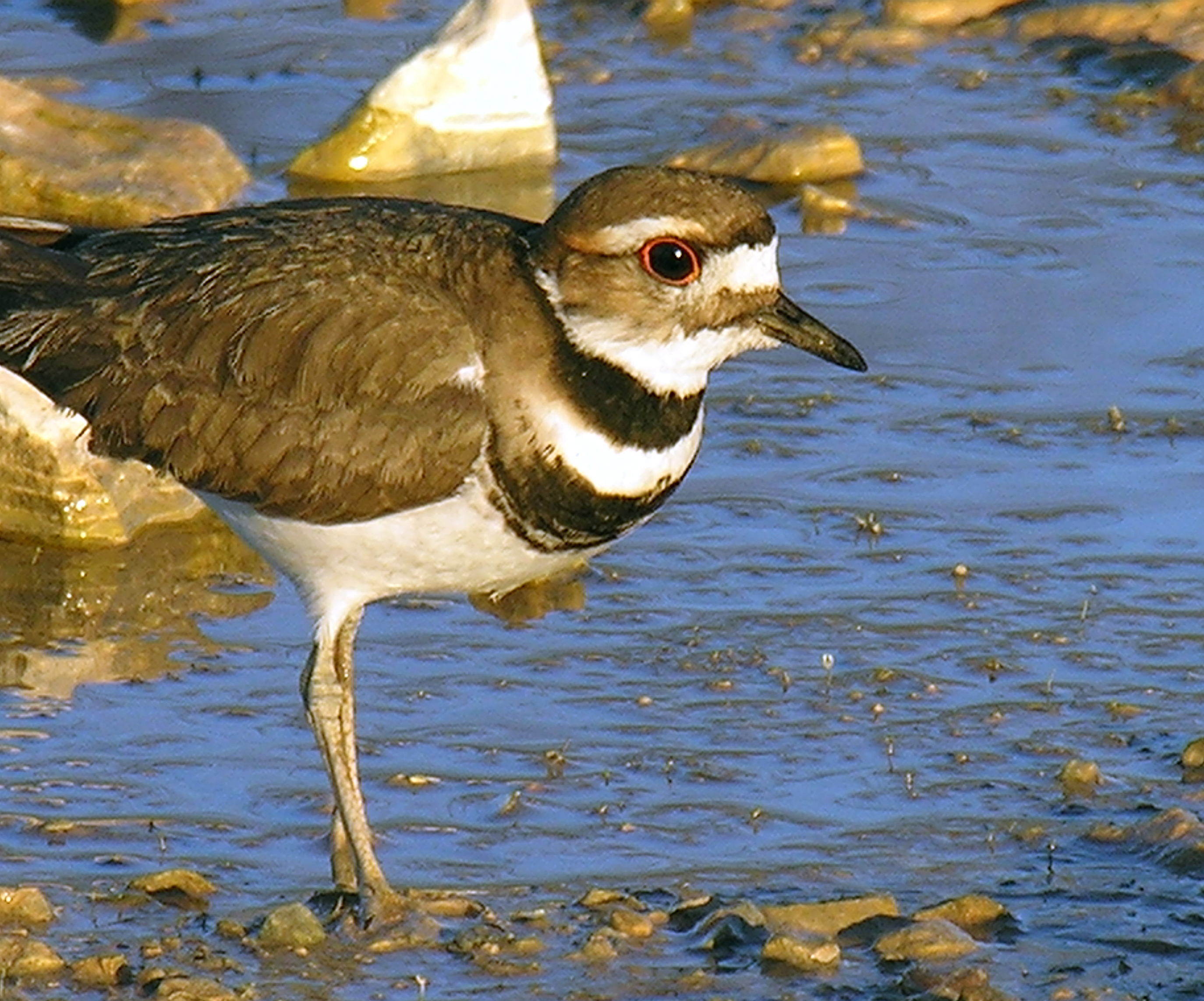
Order:
Charadriiformes
Charadriiformes (, from ''Charadrius'', the type genus of family Charadriidae) is a diverse order of small to medium-large birds. It includes about 390 species and has members in all parts of the world. Most charadriiform birds live near water an ...
Family:
Charadriidae
The bird family Charadriidae includes the plovers, dotterels, and lapwings, about 64 to 68 species in all.
Taxonomy
The family Charadriidae was introduced (as Charadriadæ) by the English zoologist William Elford Leach in a guide to the con ...
The family Charadriidae includes the plovers, dotterels, and lapwings. They are small to medium-sized birds with compact bodies, short thick necks, and long, usually pointed, wings. They are found in open country worldwide, mostly in habitats near water. Four species have been recorded in Yellowstone.
Sandpipers and allies
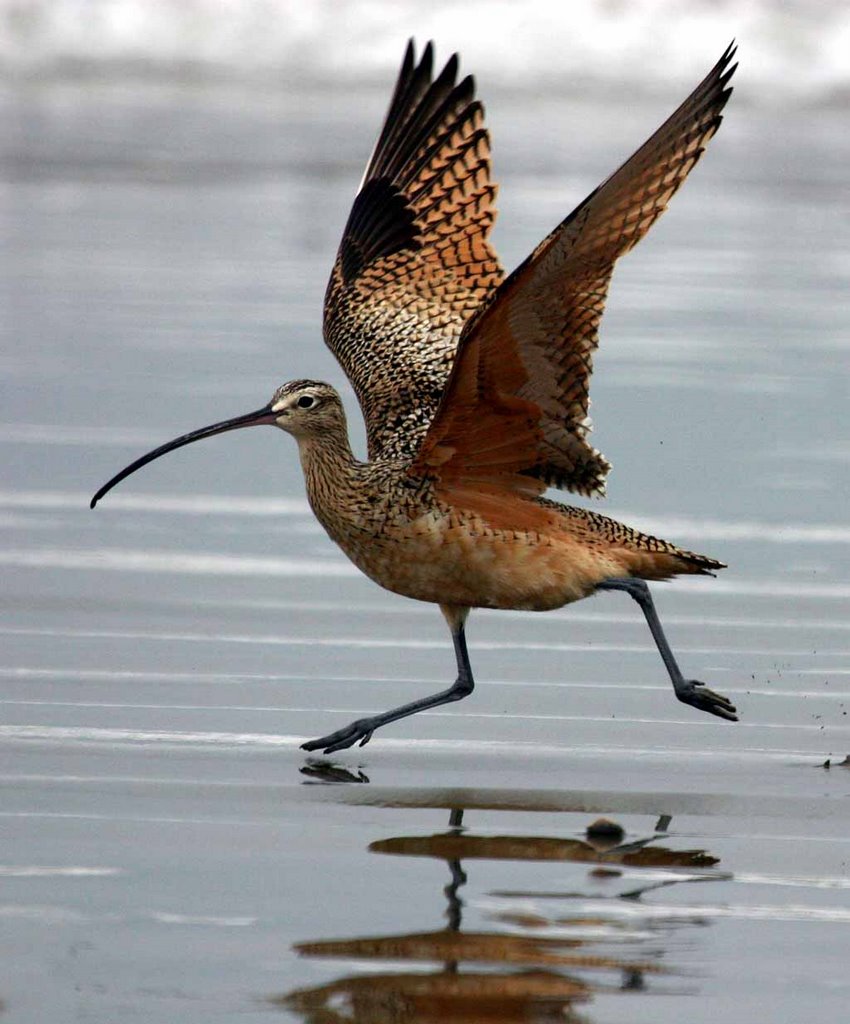
Order:
Charadriiformes
Charadriiformes (, from ''Charadrius'', the type genus of family Charadriidae) is a diverse order of small to medium-large birds. It includes about 390 species and has members in all parts of the world. Most charadriiform birds live near water an ...
Family:
Scolopacidae
Sandpipers are a large family, Scolopacidae, of waders. They include many species called sandpipers, as well as those called by names such as curlew and snipe. The majority of these species eat small invertebrates picked out of the mud or soil. ...
Scolopacidae is a large diverse family of small to medium-sized shorebirds including the sandpipers, curlews, godwits, shanks, tattlers, woodcocks, snipes, dowitchers, and phalaropes. The majority of these species eat small invertebrates picked out of the mud or soil. Different lengths of legs and bills enable multiple species to feed in the same habitat, particularly on the coast, without direct competition for food. Twenty-three species have been recorded in Yellowstone.
Gulls, terns, and skimmers
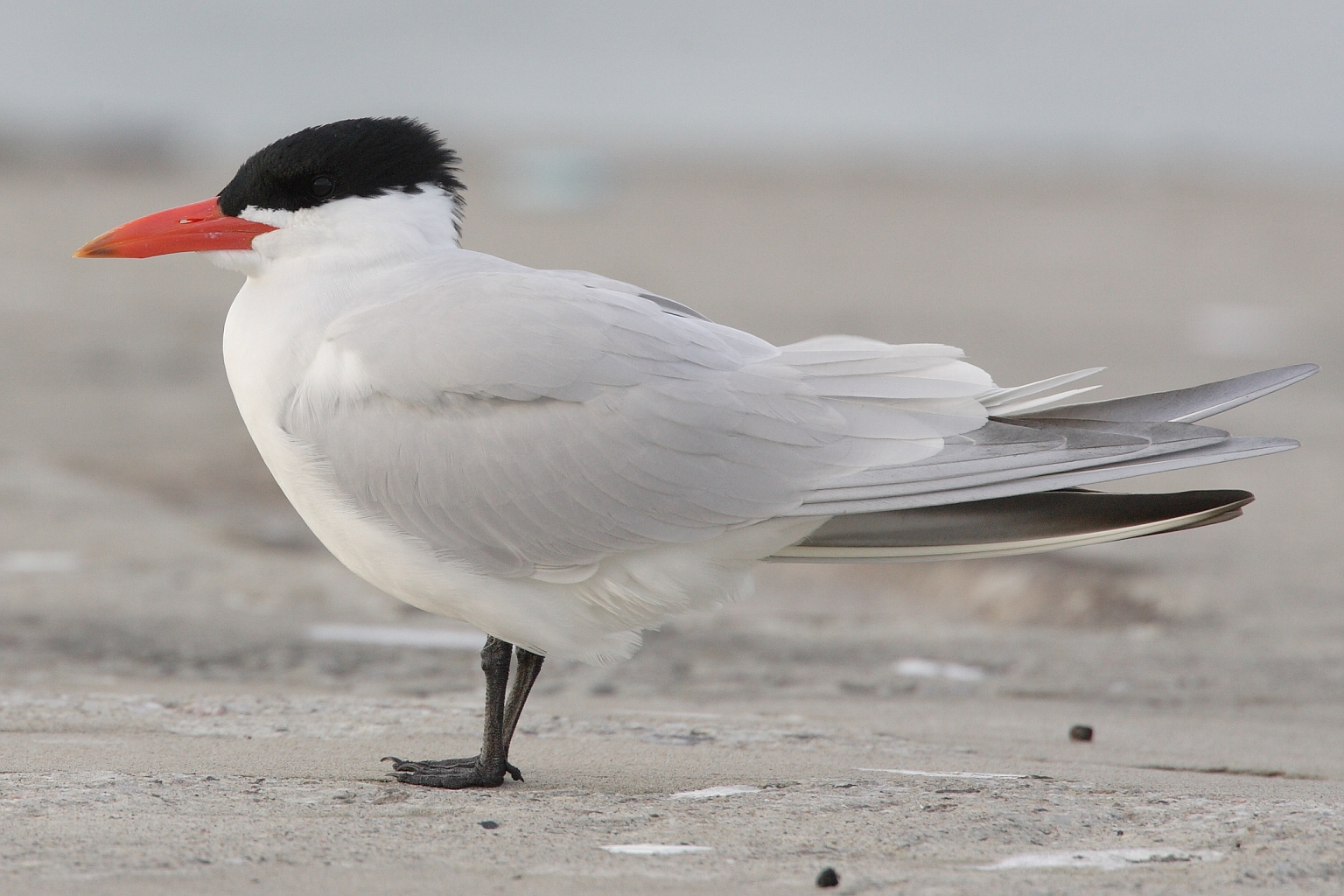
Order:
Charadriiformes
Charadriiformes (, from ''Charadrius'', the type genus of family Charadriidae) is a diverse order of small to medium-large birds. It includes about 390 species and has members in all parts of the world. Most charadriiform birds live near water an ...
Family:
Laridae
Laridae is a family of seabirds in the order Charadriiformes that includes the gulls, terns, skimmers and kittiwakes. It includes around 100 species arranged into 22 genera. They are an adaptable group of mostly aerial birds found worldwide. ...
Laridae is a family of medium to large seabirds which includes gulls, terns, kittiwakes, and skimmers. They are typically gray or white, often with black markings on the head or wings. They have stout, longish bills and webbed feet. Twelve species have been recorded in Yellowstone.
Loons

Order:
Gaviiformes
Gaviiformes is an order of aquatic birds containing the loons or divers and their closest extinct relatives. Modern gaviiformes are found in many parts of North America and northern Eurasia (Europe, Asia and debatably Africa), though prehistoric ...
Family:
Gaviidae
Loons are aquatic birds the size of a large duck, to which they are unrelated. Their plumage is largely gray or black, and they have spear-shaped bills. Loons swim well and fly adequately, but are almost hopeless on land, because their legs are placed towards the rear of the body. Two species have been recorded in Yellowstone.
Cormorants and shags

Order:
Suliformes
The order Suliformes (, dubbed "Phalacrocoraciformes" by ''Christidis & Boles 2008'') is an order recognised by the International Ornithologist's Union. In regard to the recent evidence that the traditional Pelecaniformes is polyphyletic, it has ...
Family:
Phalacrocoracidae
Phalacrocoracidae is a family of approximately 40 species of aquatic birds commonly known as cormorants and shags. Several different classifications of the family have been proposed, but in 2021 the IOC adopted a consensus taxonomy of seven gen ...
Cormorants are medium-to-large aquatic birds, usually with mainly dark plumage and areas of colored skin on the face. The bill is long, thin, and sharply hooked. Their feet are four-toed and webbed. One species has been recorded in Yellowstone.
Pelicans

Order:
Pelecaniformes
The Pelecaniformes are an order of medium-sized and large waterbirds found worldwide. As traditionally—but erroneously—defined, they encompass all birds that have feet with all four toes webbed. Hence, they were formerly also known by such n ...
Family:
Pelecanidae
The Pelecanidae is a family of pelecaniform birds within the Pelecani that contains two genera: the extinct ''Eopelecanus'' and the extant '' Pelecanus''. The family was monotypic until the description of ''Eopelecanus'' in 2021.
Pelecanids ha ...
Pelicans are very large water birds with a distinctive pouch under their beak. Like other birds in the order Pelecaniformes, they have four webbed toes. One species has been recorded in Yellowstone.
Herons, egrets, and bitterns

Order:
Pelecaniformes
The Pelecaniformes are an order of medium-sized and large waterbirds found worldwide. As traditionally—but erroneously—defined, they encompass all birds that have feet with all four toes webbed. Hence, they were formerly also known by such n ...
Family:
Ardeidae
The herons are long-legged, long-necked, freshwater and coastal birds in the family Ardeidae, with 72 recognised species, some of which are referred to as egrets or bitterns rather than herons. Members of the genera ''Botaurus'' and ''Ixobrychu ...
The family Ardeidae contains the herons, egrets, and bitterns. Herons and egrets are medium to large wading birds with long necks and legs. Bitterns tend to be shorter-necked and more secretive. Members of Ardeidae fly with their necks retracted, unlike other long-necked birds such as storks, ibises, and spoonbills. Eight species have been recorded in Yellowstone.
Ibises and spoonbills
Order:
Pelecaniformes
The Pelecaniformes are an order of medium-sized and large waterbirds found worldwide. As traditionally—but erroneously—defined, they encompass all birds that have feet with all four toes webbed. Hence, they were formerly also known by such n ...
Family:
Threskiornithidae
The family Threskiornithidae includes 36 species of large wading birds. The family has been traditionally classified into two subfamilies, the ibises and the spoonbills; however recent genetic studies have cast doubt on this arrangement, and ha ...
The family Threskiornithidae includes the ibises and spoonbills. They have long, broad wings. Their bodies tend to be elongated, the neck more so, with rather long legs. The bill is also long, decurved in the case of the ibises, straight and distinctively flattened in the spoonbills. One species has been recorded in Yellowstone.
New World vultures
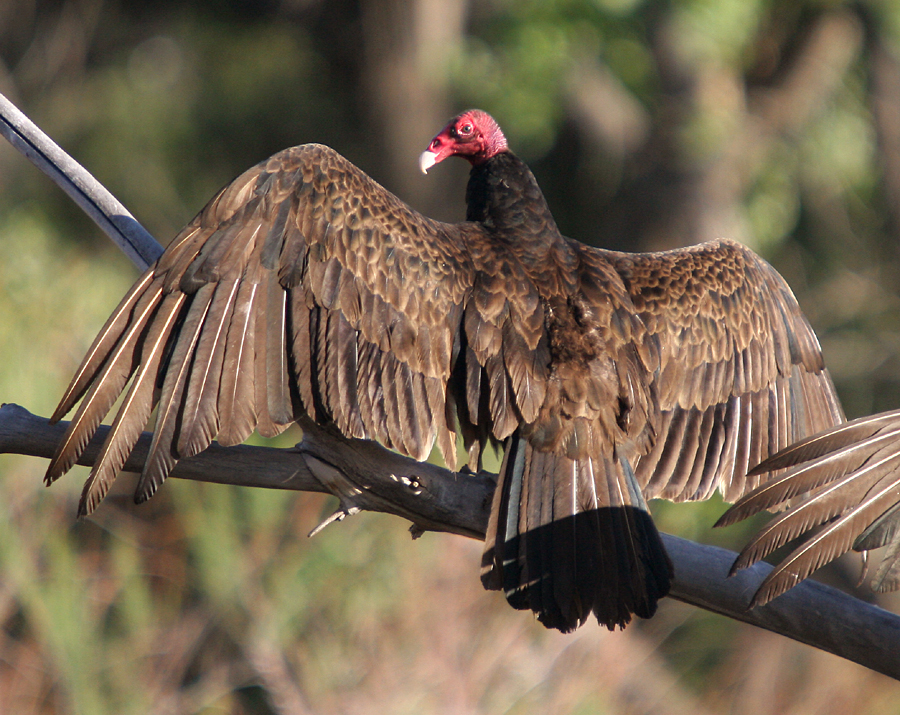
Order:
Cathartiformes
The order Cathartiformes of raptors or birds of prey includes the New World vultures and the now-extinct Teratornithidae. These raptors are classified by most taxonomic authorities in the order Accipitriformes (which includes the eagles and hawk ...
Family:
Cathartidae
The New World vulture or condor family, Cathartidae, contains seven extant species in five genera. It includes five extant vultures and two extant condors found in warm and temperate areas of the Americas. The "New World" vultures were widespre ...
The New World vultures are not closely related to Old World vultures, but superficially resemble them because of
convergent evolution
Convergent evolution is the independent evolution of similar features in species of different periods or epochs in time. Convergent evolution creates analogous structures that have similar form or function but were not present in the last com ...
. Like the Old World vultures, they are scavengers; however, unlike Old World vultures, which find carcasses by sight, New World vultures have a good sense of smell with which they locate
carcasses. One species has been recorded in Yellowstone.
Osprey

Order:
Accipitriformes
The Accipitriformes (; from Latin ''accipiter''/''accipitri-'' "hawk", and New Latin ''-formes'' "having the form of") are an order of birds that includes most of the diurnal birds of prey, including hawks, eagles, vultures, and kites, but not f ...
Family:
Pandionidae
''Pandion'' is a genus of birds of prey, known as ospreys, the only genus of family Pandionidae. Most taxonomic treatments have regarded this genus as describing a single extant species, separated to subspecies or races, while some treatments rec ...
Pandionidae is a family of fish-eating birds of prey possessing a very large, powerful hooked beak for tearing flesh from their prey, strong legs, powerful talons, and keen eyesight. The family is
monotypic
In biology, a monotypic taxon is a taxonomic group (taxon) that contains only one immediately subordinate taxon. A monotypic species is one that does not include subspecies or smaller, infraspecific taxa. In the case of genera, the term "unispe ...
.
Hawks, eagles, and kites
Order:
Accipitriformes
The Accipitriformes (; from Latin ''accipiter''/''accipitri-'' "hawk", and New Latin ''-formes'' "having the form of") are an order of birds that includes most of the diurnal birds of prey, including hawks, eagles, vultures, and kites, but not f ...
Family:
Accipitridae
The Accipitridae is one of the three families within the order Accipitriformes, and is a family of small to large birds with strongly hooked bills and variable morphology based on diet. They feed on a range of prey items from insects to medium-s ...
Accipitridae is a family of birds of prey which includes hawks, eagles, kites, harriers, and Old World vultures. These birds have very large powerful hooked beaks for tearing flesh from their prey, strong legs, powerful talons, and keen eyesight. Twelve species have been recorded in Yellowstone.
Owls
Order:
StrigiformesFamily:
Strigidae
The true owls or typical owls (family Strigidae) are one of the two generally accepted families of owls, the other being the barn owls (Tytonidae). This large family comprises 230 living or recently extinct species in 24 genera. The typical owl ...
Typical owls are small to large solitary nocturnal birds of prey. They have large forward-facing eyes and ears, a hawk-like beak, and a conspicuous circle of feathers around each eye called a facial disk. Eleven species have been recorded in Yellowstone.
Kingfishers
Order:
Coraciiformes
The Coraciiformes are a group of usually colourful birds including the kingfishers, the bee-eaters, the rollers, the motmots, and the todies. They generally have syndactyly, with three forward-pointing toes (and toes 3 & 4 fused at their base) ...
Family:
Alcedinidae
Kingfishers are medium-sized birds with large heads, long pointed bills, short legs, and stubby tails. One species has been recorded in Yellowstone.
Woodpeckers

Order:
Piciformes
Nine families of largely arboreal birds make up the order Piciformes , the best-known of them being the Picidae, which includes the woodpeckers and close relatives. The Piciformes contain about 71 living genera with a little over 450 species, of ...
Family:
Picidae
Woodpeckers are small to medium-sized birds with chisel-like beaks, short legs, stiff tails, and long tongues used for capturing insects. Some species have feet with two toes pointing forward and two backward, while several species have only three toes. Many woodpeckers have the habit of tapping noisily on tree trunks with their beaks. Ten species have been recorded in Yellowstone.
Falcons and caracaras

Order:
Falconiformes
The order Falconiformes () is represented by the extant family Falconidae (falcons and caracaras) and a handful of enigmatic Paleogene species. Traditionally, the other bird of prey families Cathartidae (New World vultures and condors), Sagitt ...
Family:
Falconidae
Falconidae is a family of diurnal birds of prey, notably the falcons and caracaras. They differ from hawks, eagles, and kites in that they kill with their beaks instead of their talons. Five species have been recorded in Yellowstone.
Tyrant flycatchers

Order:
Passeriformes
A passerine () is any bird of the order Passeriformes (; from Latin 'sparrow' and '-shaped'), which includes more than half of all bird species. Sometimes known as perching birds, passerines are distinguished from other orders of birds by th ...
Family:
Tyrannidae
The tyrant flycatchers (Tyrannidae) are a family of passerine birds which occur throughout North and South America. They are considered the largest family of birds known to exist in the world, with more than 400 species. They are the most dive ...
Tyrant flycatchers are Passerine birds which occur throughout North and South America. They superficially resemble the Old World flycatchers, but are more robust and have stronger bills. They do not have the sophisticated vocal capabilities of the songbirds. Most, but not all, are rather plain. As the name implies, most are insectivorous. Twelve species have been recorded in Yellowstone.
Vireos, shrike-babblers, and erpornis

Order:
Passeriformes
A passerine () is any bird of the order Passeriformes (; from Latin 'sparrow' and '-shaped'), which includes more than half of all bird species. Sometimes known as perching birds, passerines are distinguished from other orders of birds by th ...
Family:
Vireonidae
The vireos make up a family, Vireonidae, of small to medium-sized passerine birds found in the New World (Canada to Argentina, including Bermuda and the West Indies) and Southeast Asia. "Vireo" is a Latin word referring to a green migratory bir ...
The vireos are a group of small to medium-sized passerine birds restricted to the New World. They are typically greenish in color and resemble wood warblers apart from their heavier bills. Four species have been recorded in Yellowstone.
Shrikes
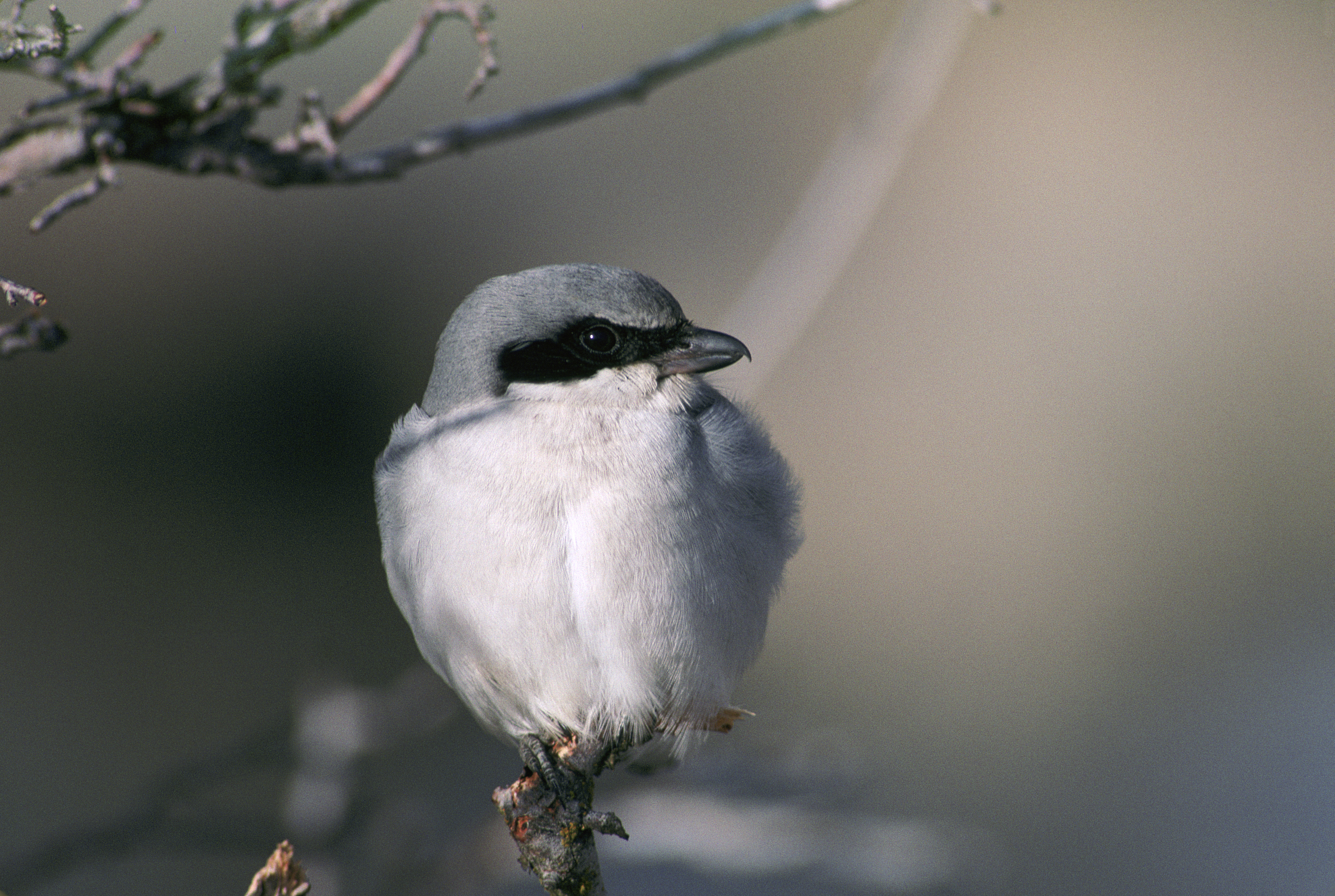
Order:
Passeriformes
A passerine () is any bird of the order Passeriformes (; from Latin 'sparrow' and '-shaped'), which includes more than half of all bird species. Sometimes known as perching birds, passerines are distinguished from other orders of birds by th ...
Family:
Laniidae
Shrikes are passerine birds known for their habit of catching other birds and small animals and impaling the uneaten portions of their bodies on thorns. A shrike's beak is hooked, like that of a typical bird of prey. Two species have been recorded in Yellowstone.
Crows, jays, and magpies

Order:
Passeriformes
A passerine () is any bird of the order Passeriformes (; from Latin 'sparrow' and '-shaped'), which includes more than half of all bird species. Sometimes known as perching birds, passerines are distinguished from other orders of birds by th ...
Family:
Corvidae
Corvidae is a cosmopolitan family of oscine passerine birds that contains the crows, ravens, rooks, jackdaws, jays, magpies, treepies, choughs, and nutcrackers. In colloquial English, they are known as the crow family or corvids. Cu ...
The family Corvidae includes crows, ravens, jays, choughs, magpies, treepies, nutcrackers, and ground jays. Corvids are above average in size among the Passeriformes, and some of the larger species show high levels of intelligence. Eight species have been recorded in Yellowstone.
Tits, chickadees, and titmice

Order:
Passeriformes
A passerine () is any bird of the order Passeriformes (; from Latin 'sparrow' and '-shaped'), which includes more than half of all bird species. Sometimes known as perching birds, passerines are distinguished from other orders of birds by th ...
Family:
Paridae
The tits, chickadees, and titmice constitute the Paridae, a large family of small passerine birds which occur mainly in the Northern Hemisphere and Africa. Most were formerly classified in the genus ''Parus''.
Members of this family are common ...
The Paridae are mainly small stocky woodland species with short stout bills. Some have crests. They are adaptable birds, with a mixed diet including seeds and insects. Two species have been recorded in Yellowstone.
Larks

Order:
Passeriformes
A passerine () is any bird of the order Passeriformes (; from Latin 'sparrow' and '-shaped'), which includes more than half of all bird species. Sometimes known as perching birds, passerines are distinguished from other orders of birds by th ...
Family:
Alaudidae
Larks are passerine birds of the family Alaudidae. Larks have a cosmopolitan distribution with the largest number of species occurring in Africa. Only a single species, the horned lark, occurs in North America, and only Horsfield's bush lark occ ...
Larks are small terrestrial birds with often extravagant songs and display flights. Most larks are fairly dull in appearance. Their food is insects and seeds. One species has been recorded in Yellowstone.
Swallows
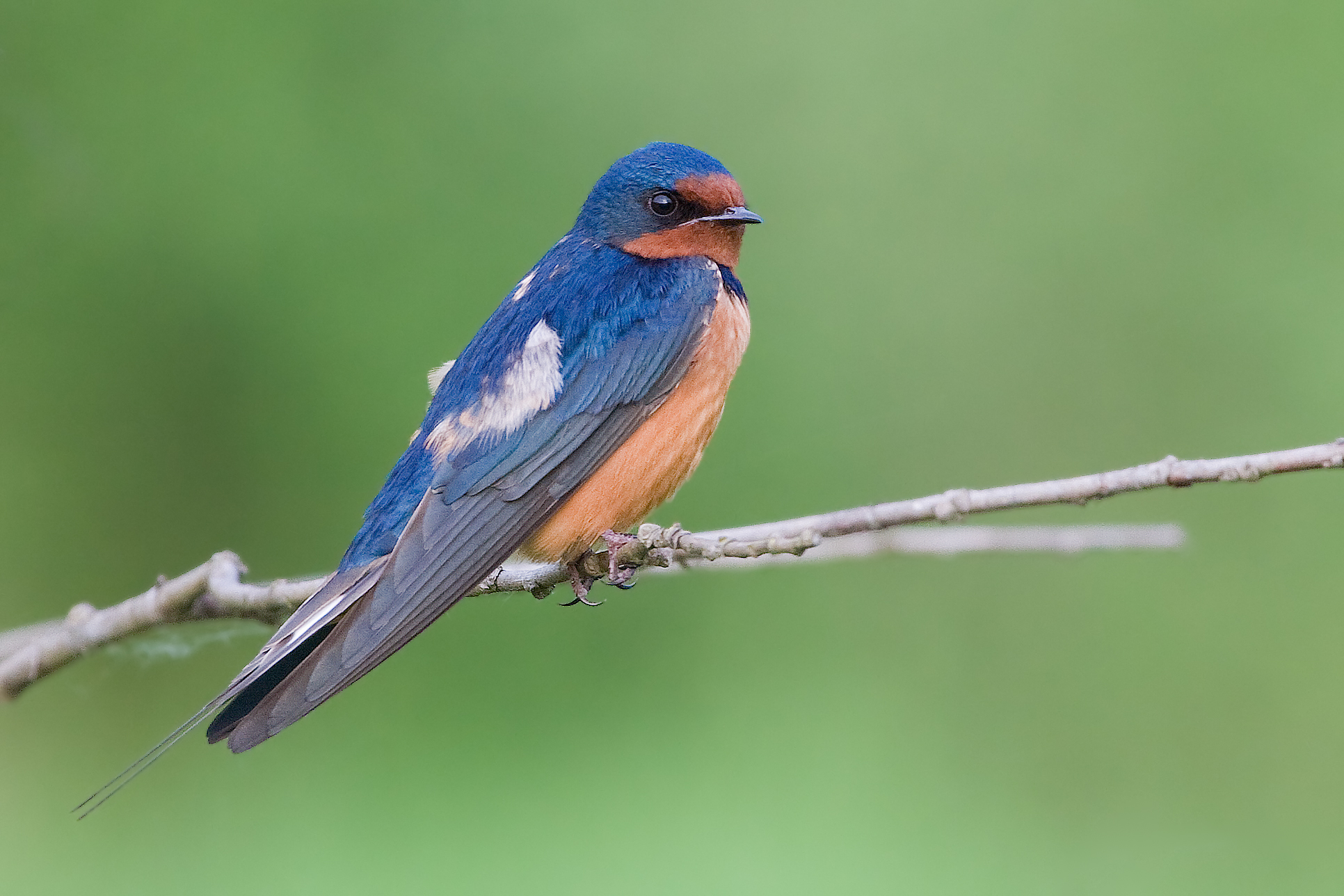
Order:
Passeriformes
A passerine () is any bird of the order Passeriformes (; from Latin 'sparrow' and '-shaped'), which includes more than half of all bird species. Sometimes known as perching birds, passerines are distinguished from other orders of birds by th ...
Family:
Hirundinidae
The swallows, martins, and saw-wings, or Hirundinidae, are a family of passerine songbirds found around the world on all continents, including occasionally in Antarctica. Highly adapted to aerial feeding, they have a distinctive appearance. The ...
The family Hirundinidae is adapted to aerial feeding. They have a slender streamlined body, long pointed wings, and a short bill with a wide gape. The feet are adapted to perching rather than walking, and the front toes are partially joined at the base. Seven species have been recorded in Yellowstone.
Kinglets

Order:
Passeriformes
A passerine () is any bird of the order Passeriformes (; from Latin 'sparrow' and '-shaped'), which includes more than half of all bird species. Sometimes known as perching birds, passerines are distinguished from other orders of birds by th ...
Family:
Regulidae
The kinglets are a small family of birds which resemble the titmice. They are very small insectivorous birds, mostly in the genus ''Regulus''. The adults have colored crowns, giving rise to their names. Two species have been recorded in Yellowstone.
Waxwings
Order:
Passeriformes
A passerine () is any bird of the order Passeriformes (; from Latin 'sparrow' and '-shaped'), which includes more than half of all bird species. Sometimes known as perching birds, passerines are distinguished from other orders of birds by th ...
Family:
Bombycillidae
The waxwings are three species of passerine birds classified in the genus ''Bombycilla''. They are pinkish-brown and pale grey with distinctive smooth plumage in which many body feathers are not individually visible, a black and white eyestri ...
The waxwings are a group of passerine birds with soft silky plumage and unique red tips to some of the wing feathers. In the Bohemian and cedar waxwings, these tips look like
sealing wax
Sealing wax is a wax material of a seal which, after melting, hardens quickly (to paper, parchment, ribbons and wire, and other material) forming a bond that is difficult to separate without noticeable tampering. Wax is used to verify something ...
and give the group its name. These are arboreal birds of northern forests. They live on insects in summer and berries in winter. Two species have been recorded in Yellowstone.
Nuthatches
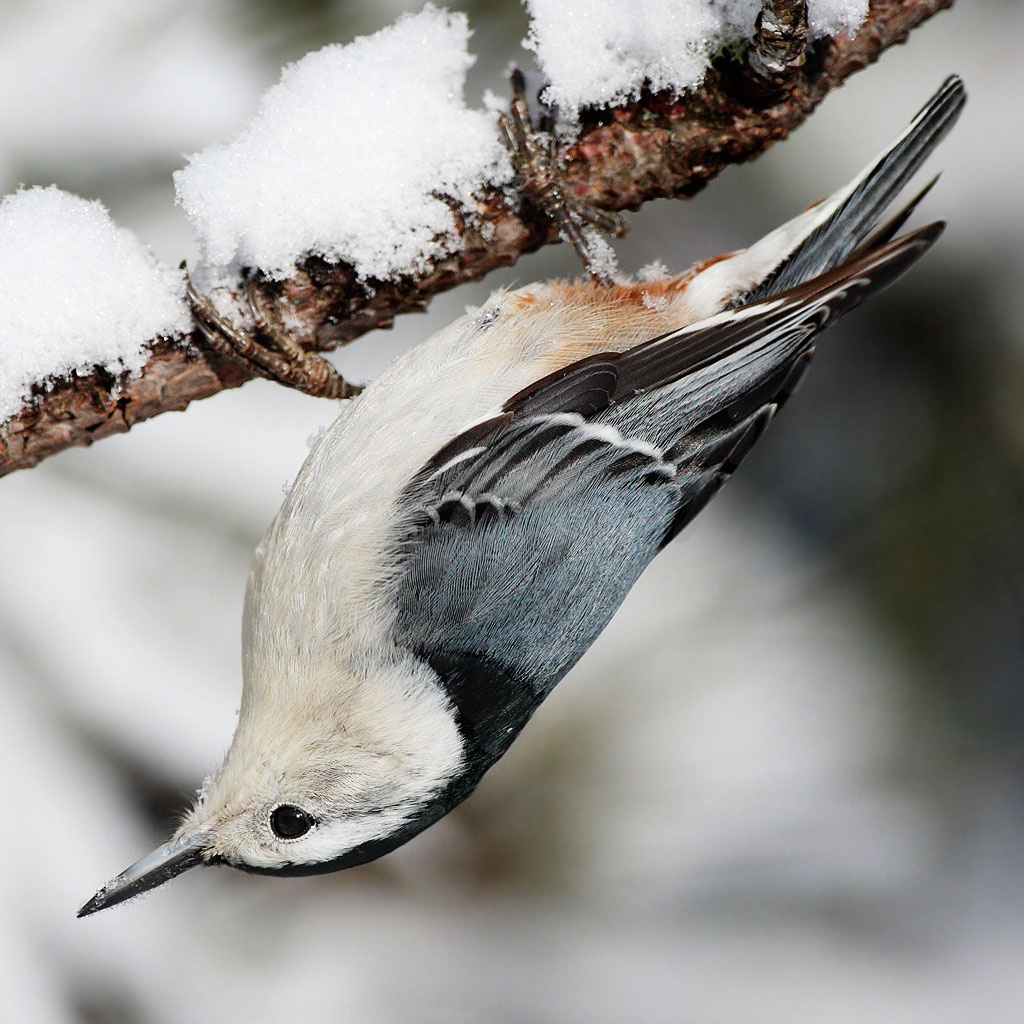
Order:
Passeriformes
A passerine () is any bird of the order Passeriformes (; from Latin 'sparrow' and '-shaped'), which includes more than half of all bird species. Sometimes known as perching birds, passerines are distinguished from other orders of birds by th ...
Family:
Sittidae
The nuthatches () constitute a genus, ''Sitta'', of small passerine birds belonging to the family Sittidae. Characterised by large heads, short tails, and powerful bills and feet, nuthatches advertise their territory using loud, simple songs. Mo ...
Nuthatches are small woodland birds. They have the unusual ability to climb down trees head first, unlike other birds which can only go upwards. Nuthatches have big heads, short tails, and powerful bills and feet. Three species have been recorded in Yellowstone.
Treecreepers
Order:
Passeriformes
A passerine () is any bird of the order Passeriformes (; from Latin 'sparrow' and '-shaped'), which includes more than half of all bird species. Sometimes known as perching birds, passerines are distinguished from other orders of birds by th ...
Family:
Certhiidae
The treecreepers are a family, Certhiidae, of small passerine birds, widespread in wooded regions of the Northern Hemisphere and sub-Saharan Africa. The family contains eleven species in two genera, ''Certhia'' and '' Salpornis''. Their plumage i ...
Creepers are small woodland birds, brown above and white below. They have thin pointed down-curved bills, which they use to extricate insects from bark. They have stiff tail feathers, like woodpeckers, which they use to support themselves on vertical trees. One species has been recorded in Yellowstone.
Gnatcatchers
Order:
Passeriformes
A passerine () is any bird of the order Passeriformes (; from Latin 'sparrow' and '-shaped'), which includes more than half of all bird species. Sometimes known as perching birds, passerines are distinguished from other orders of birds by th ...
Family:
Polioptilidae
These dainty birds resemble
Old World warbler
Old World warblers are a large group of birds formerly grouped together in the bird family Sylviidae. The family held over 400 species in over 70 genera, and were the source of much taxonomic confusion. Two families were split out initially, the ci ...
s in their structure and habits, moving restlessly through the foliage seeking insects. The gnatcatchers are mainly soft bluish gray in color and have the typical insectivore's long sharp bill. Many species have distinctive black head patterns (especially males) and long, regularly cocked, black-and-white tails. One species has been recorded in Yellowstone.
Wrens

Order:
Passeriformes
A passerine () is any bird of the order Passeriformes (; from Latin 'sparrow' and '-shaped'), which includes more than half of all bird species. Sometimes known as perching birds, passerines are distinguished from other orders of birds by th ...
Family:
Troglodytidae
Wrens are small and inconspicuous birds, except for their loud songs. They have short wings and thin down-turned bills. Several species often hold their tails upright. All are insectivorous. Six species have been recorded in Yellowstone.
Mockingbirds and thrashers

Order:
Passeriformes
A passerine () is any bird of the order Passeriformes (; from Latin 'sparrow' and '-shaped'), which includes more than half of all bird species. Sometimes known as perching birds, passerines are distinguished from other orders of birds by th ...
Family:
Mimidae
The mimids are a family of passerine birds which includes thrashers, mockingbirds, tremblers, and the New World catbirds. These birds are notable for their vocalization, especially their remarkable ability to mimic a wide variety of birds and other sounds heard outdoors. The species tend towards dull grays and browns in their appearance. Two species have been recorded in Yellowstone.
Starlings
Order:
Passeriformes
A passerine () is any bird of the order Passeriformes (; from Latin 'sparrow' and '-shaped'), which includes more than half of all bird species. Sometimes known as perching birds, passerines are distinguished from other orders of birds by th ...
Family:
Sturnidae
Starlings are small to medium-sized passerines with strong feet. Their flight is strong and direct and they are very gregarious. Their preferred habitat is fairly open country, and they eat insects and fruit. Plumage is typically dark with a metallic sheen. One species has been recorded in Yellowstone.
Dippers
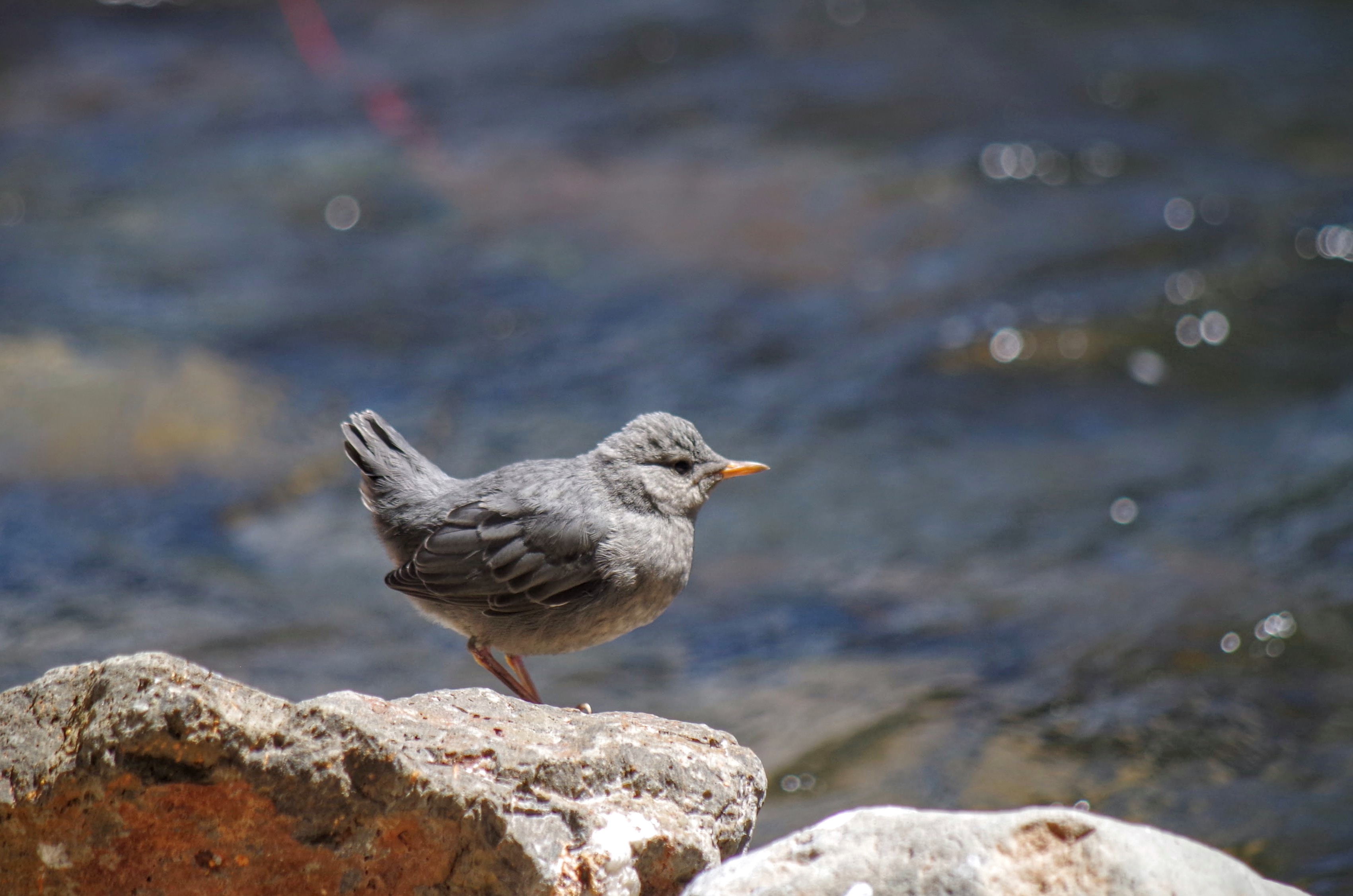
Order:
Passeriformes
A passerine () is any bird of the order Passeriformes (; from Latin 'sparrow' and '-shaped'), which includes more than half of all bird species. Sometimes known as perching birds, passerines are distinguished from other orders of birds by th ...
Family:
Cinclidae
Dippers are small stout birds that feed in cold, fast-moving streams. One species has been recorded in Yellowstone.
Thrushes and allies

Order:
Passeriformes
A passerine () is any bird of the order Passeriformes (; from Latin 'sparrow' and '-shaped'), which includes more than half of all bird species. Sometimes known as perching birds, passerines are distinguished from other orders of birds by th ...
Family:
Turdidae
The thrushes are a passerine bird family, Turdidae, with a worldwide distribution. The family was once much larger before biologists reclassified the former subfamily Saxicolinae, which includes the chats and European robins, as Old World fl ...
The thrushes are a group of passerine birds that occur mainly but not exclusively in the Old World. They are plump, soft plumaged, small to medium-sized insectivores or sometimes omnivores, often feeding on the ground. Many have attractive songs. Eight species have been recorded in Yellowstone.
Old World sparrows
Order:
Passeriformes
A passerine () is any bird of the order Passeriformes (; from Latin 'sparrow' and '-shaped'), which includes more than half of all bird species. Sometimes known as perching birds, passerines are distinguished from other orders of birds by th ...
Family:
Passeridae
Old World sparrows are a group of small passerine birds forming the family Passeridae. They are also known as true sparrows, a name also used for a particular genus of the family, '' Passer''. They are distinct from both the New World sparrows, ...
In general, Old World sparrows tend to be small plump brownish or grayish birds with short tails and short powerful beaks. Sparrows are seed eaters, but they also consume small insects. One species has been recorded in Yellowstone.
Wagtails and pipits
Order:
Passeriformes
A passerine () is any bird of the order Passeriformes (; from Latin 'sparrow' and '-shaped'), which includes more than half of all bird species. Sometimes known as perching birds, passerines are distinguished from other orders of birds by th ...
Family:
Motacillidae
The wagtails, longclaws, and pipits are a family, Motacillidae, of small passerine birds with medium to long tails. Around 70 species occur in five genera. The longclaws are entirely restricted to the Afrotropics, and the wagtails are predomin ...
Motacillidae is a family of small passerine birds with medium to long tails which includes the wagtails, longclaws, and pipits. They are slender ground-feeding insectivores of open country. One species has been recorded in Yellowstone.
Finches, euphonias, and allies

Order:
Passeriformes
A passerine () is any bird of the order Passeriformes (; from Latin 'sparrow' and '-shaped'), which includes more than half of all bird species. Sometimes known as perching birds, passerines are distinguished from other orders of birds by th ...
Family:
Fringillidae
The true finches are small to medium-sized passerine birds in the family Fringillidae. Finches have stout conical bills adapted for eating seeds and nuts and often have colourful plumage. They occupy a great range of habitats where they are usua ...
Finches are seed-eating passerine birds that are small to moderately large and have a strong beak, usually conical and in some species very large. All have twelve tail feathers and nine primaries. These birds have a bouncing flight with alternating bouts of flapping and gliding on closed wings, and most sing well. Twelve species have been recorded in Yellowstone.
Longspurs and snow buntings
Order:
Passeriformes
A passerine () is any bird of the order Passeriformes (; from Latin 'sparrow' and '-shaped'), which includes more than half of all bird species. Sometimes known as perching birds, passerines are distinguished from other orders of birds by th ...
Family:
Calcariidae
Calcariidae is a small family of passerine birds. It includes longspurs and snow buntings. There are six species in three genera worldwide, found mainly in North America and Eurasia. They are migratory and can live in a variety of habitats includ ...
The Calcariidae are a group of passerine birds that were traditionally grouped with the New World sparrows, but differ in a number of respects and are usually found in open grassy areas. Three species have been recorded in Yellowstone.
New World sparrows
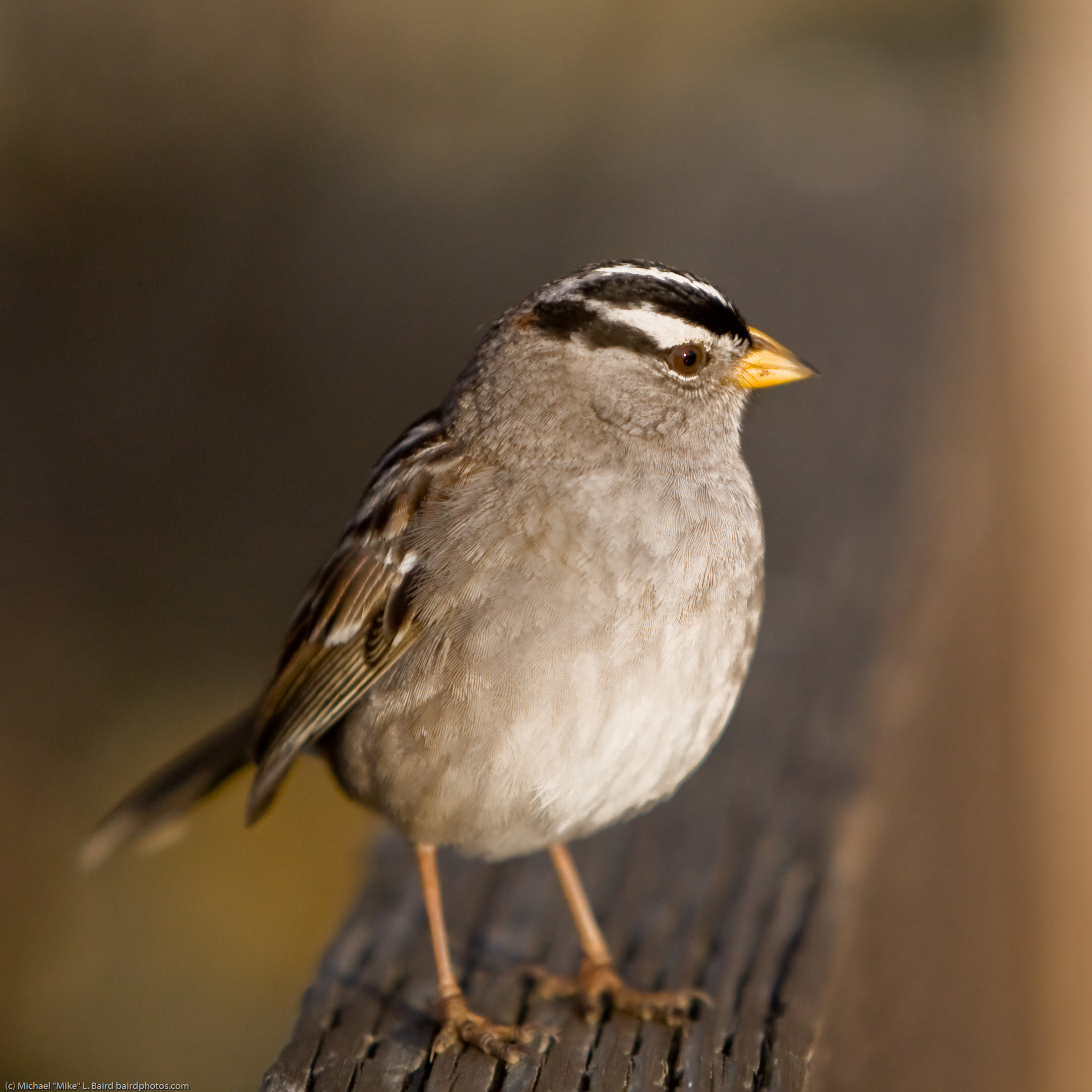
Order:
Passeriformes
A passerine () is any bird of the order Passeriformes (; from Latin 'sparrow' and '-shaped'), which includes more than half of all bird species. Sometimes known as perching birds, passerines are distinguished from other orders of birds by th ...
Family:
Passerellidae
New World sparrows are a group of mainly New World passerine birds, forming the family Passerellidae. They are seed-eating birds with conical bills, brown or gray in color, and many species have distinctive head patterns.
Although they share t ...
Until 2017, these species were considered part of the family Emberizidae. Most of the species are known as sparrows, but these birds are not closely related to the Old World sparrows which are in the family Passeridae. Many of these have distinctive head patterns. Twenty-two species have been recorded in Yellowstone.
Yellow-breasted chat
Order:
Passeriformes
A passerine () is any bird of the order Passeriformes (; from Latin 'sparrow' and '-shaped'), which includes more than half of all bird species. Sometimes known as perching birds, passerines are distinguished from other orders of birds by th ...
Family:
Icteriidae
The yellow-breasted chat (''Icteria virens'') is a large songbird found in North America, and is the only member of the family Icteriidae. It was once a member of the New World warbler family, but in 2017, the American Ornithological Society move ...
This species was historically placed in the wood-warblers (Parulidae) but nonetheless most authorities were unsure if it belonged there. It was placed in its own family in 2017.
Troupials and allies

Order:
Passeriformes
A passerine () is any bird of the order Passeriformes (; from Latin 'sparrow' and '-shaped'), which includes more than half of all bird species. Sometimes known as perching birds, passerines are distinguished from other orders of birds by th ...
Family:
Icteridae
Icterids () or New World blackbirds make up a family, the Icteridae (), of small to medium-sized, often colorful, New World passerine birds. Most species have black as a predominant plumage color, often enlivened by yellow, orange, or red. Th ...
The icterids are a group of small to medium-sized, often colorful passerine birds restricted to the New World and include the grackles, New World blackbirds and New World orioles. Most species have black as a predominant plumage color, often enlivened by yellow, orange, or red. Nine species have been recorded in Yellowstone.
New World warblers
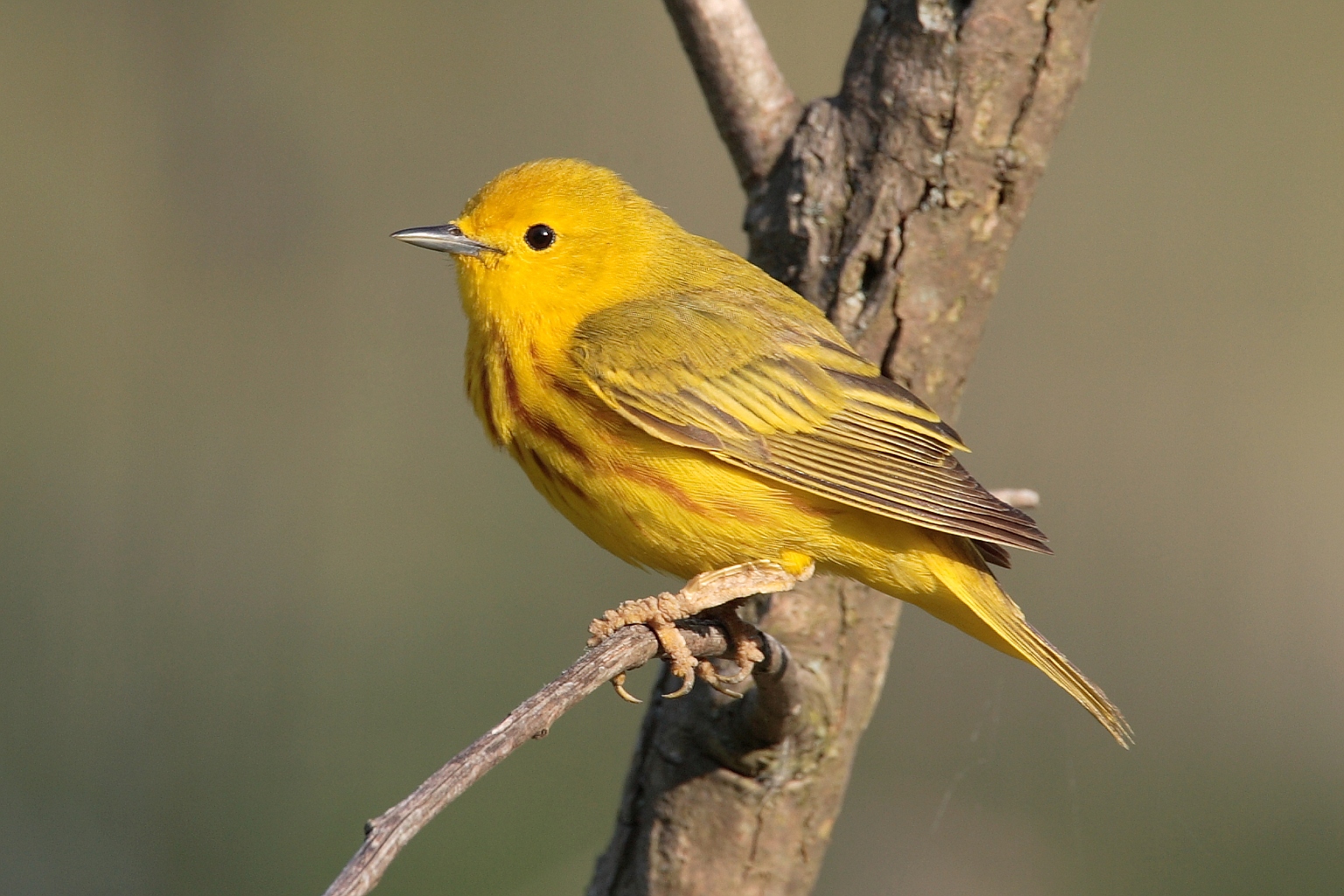
Order:
Passeriformes
A passerine () is any bird of the order Passeriformes (; from Latin 'sparrow' and '-shaped'), which includes more than half of all bird species. Sometimes known as perching birds, passerines are distinguished from other orders of birds by th ...
Family:
Parulidae
The New World warblers or wood-warblers are a group of small, often colorful, passerine birds that make up the family Parulidae and are restricted to the New World. They are not closely related to Old World warblers or Australian warblers. Mos ...
The wood warblers are a group of small often colorful passerine birds restricted to the New World. Most are arboreal, but some like the
ovenbird
The ovenbird (''Seiurus aurocapilla'') is a small songbird of the New World warbler family (Parulidae). This migratory bird breeds in eastern North America and winters in Central America, many Caribbean islands, Florida and northern Venezuela.
...
and the two
waterthrush
The waterthrushes are a genus of New World warbler, ''Parkesia''. The genus was split from ''Seiurus'', which previously contained both waterthrush species and the ovenbird. When the genera split, the ovenbird was the only member left in ''Seiuru ...
es, are more terrestrial. Most members of this family are insectivores. Twenty-one species have been recorded in Yellowstone.
Cardinals and allies

Order:
Passeriformes
A passerine () is any bird of the order Passeriformes (; from Latin 'sparrow' and '-shaped'), which includes more than half of all bird species. Sometimes known as perching birds, passerines are distinguished from other orders of birds by th ...
Family:
Cardinalidae
Cardinalidae (often referred to as the "cardinal-grosbeaks" or simply the "cardinals") is a family of New World-endemic passerine birds that consists of cardinals, grosbeaks, and buntings. It also includes several birds such as the tanager-lik ...
The cardinals are a family of robust, seed-eating birds with strong bills. They are typically associated with open woodland. The sexes usually have distinct plumages. Five species have been recorded in Yellowstone.
See also
*
List of birds of Idaho
This list of birds of Idaho includes species documented in the U.S. state of Idaho and accepted by the Idaho Bird Records Committee (IBRC). As of January 2022, there were 433 species on the official list. One additional species is considered hy ...
*
List of birds of Montana
*
List of birds of Wyoming
References
Further reading
*
*
*
*
*
*
{{DEFAULTSORT:Birds Of Yellowstone National Park
Wyoming, Yellowstone
Yellowstone National Park
Fauna of the Rocky Mountains
 This is a comprehensive listing of the bird species recorded in
This is a comprehensive listing of the bird species recorded in  Order: AnseriformesFamily:
Order: AnseriformesFamily:  Order:
Order:  Order: PodicipediformesFamily: Podicipedidae
Grebes are small to medium-large freshwater diving birds. They have lobed toes and are excellent swimmers and divers. However, they have their feet placed far back on the body, making them quite ungainly on land. Six species have been recorded in Yellowstone.
Order: PodicipediformesFamily: Podicipedidae
Grebes are small to medium-large freshwater diving birds. They have lobed toes and are excellent swimmers and divers. However, they have their feet placed far back on the body, making them quite ungainly on land. Six species have been recorded in Yellowstone.
 Order:
Order:  Order:
Order:  Order:
Order:  Order:
Order:  Order:
Order:  Order:
Order:  Order:
Order:  Order:
Order:  Order:
Order:  Order:
Order:  Order:
Order:  Order:
Order:  Order:
Order:  Order:
Order:  Order:
Order:  Order:
Order:  Order:
Order:  Order:
Order:  Order:
Order:  Order:
Order:  Order:
Order:  Order:
Order:  Order:
Order:  Order:
Order:  Order:
Order:  Order:
Order:  Order:
Order:  Order:
Order:  Order:
Order:  Order:
Order:  Order:
Order:  Order:
Order:  Order:
Order:  Order:
Order: